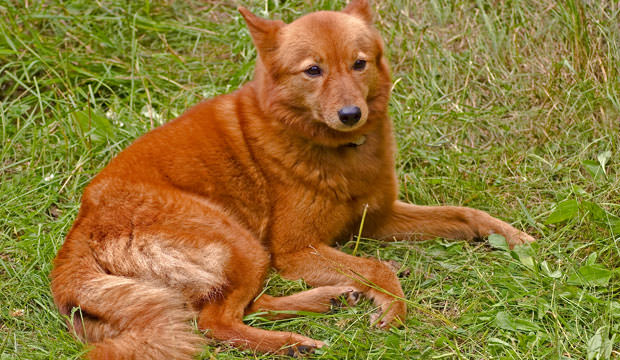
There is an amazing array of rare dog breeds that make just as spectacular pets or can perform important work like guarding property. The following breeds are among the rarest dogs that you likely never even heard of. Check them out as they could be the ideal dog for you or someone you know.
1. Finnish Spitz
Originally bred in Finland, the Finnish Spitz was initially bred as a hunting dog.
Owners employed the dog to hunt small game like grouse; however, it has also been deemed as effective for hunting large game like moose.
In many ways, it’s strange that this breed is so rare outside of its homeland as it also makes an excellent family pet and is revered for its child-friendly temperament.
While Finnish Spitz puppies are often born with dark coats, adults sport coats that range from honey-gold to golden-red. Some adults may sport a chestnut coat. As a medium-sized dog, males may weigh no more than thirty pounds.
Females rarely weigh beyond twenty-two pounds. Lively and alert, the Finnish Spitz loves to be active. This breed does not like to be kenneled, however, and values its run of the home. Indoor exercise complements its fitness needs, but it also requires long walks and outdoor play.
In its homeland, the Finnish Spitz is famous for its barking ability and has been hailed as the “King of the Barkers.” Because they are exceptional barkers, many people prefer to employ them as watchdogs.
2. Mudi
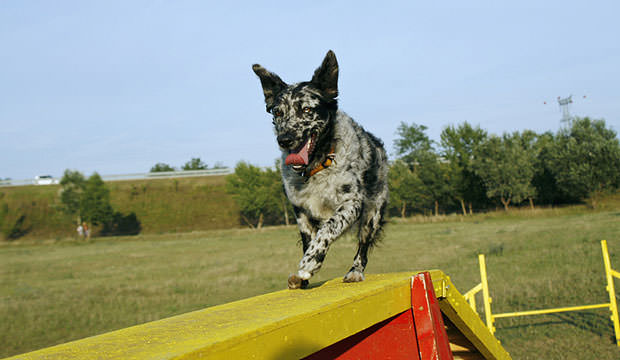
A relative of the Puli and Pumi, the Mudi is found in a variety of colors such as fawn, black, white, yellow, gray, and others. The dog is well-liked for its great versatility.
It is a great hunter as well as herder. It is also beloved for its great temperament. Known for its health and long life, the Mudi does like to exercise. Its active nature is what makes it so ideal for herding.
Aside from enjoying plenty of walks and exercise, this dog is also a game lover. It will excel in games like Frisbee or other types of fetch games.
An agile and intelligent breed, the Mudi also makes a fine guard dog. With all its many charms, it is a wonder that this breed is so rare!
Mudi will behave well around children, but its seems to do best when exposed to them as a puppy or else it is apt to view them as equal members of the pack and not as humans to which it must obey. This dynamic dog can be found outside of Hungary but it remains quite rare at present.
3. Otterhound
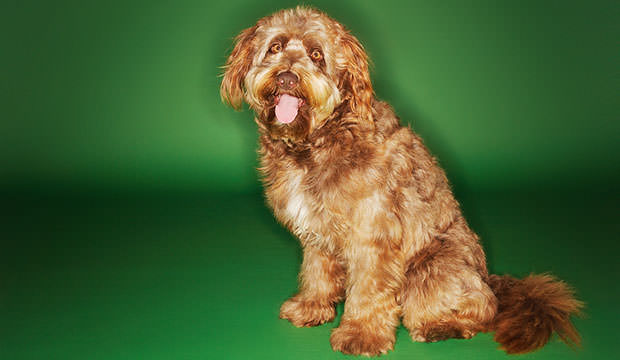
This large hound typically weighs between 80 and 120 pounds. It has a grizzly-colored coat and distinctive webbed feet that support its ability in the water.
Naturally, the Otterhound is an adept swimmer. Otters were popularly hunted in the Otterhound’s homeland since the Middle Ages. Even so, today’s Otterhound can only be traced to roughly the early nineteenth century.
The Otterhound has been regarded as a great family pet and doesn’t seem to mind lounging about with its human family. However, the breed does require exercise to keep fit and to maintain its physical prowess.
Though this breed is highly regarded, it is a rare one with only about 1,000 known to exist. This low count means it is an endangered breed. In the UK, considerable effort is going into the cause to save this British breed.
As a large breed, it’s not surprising that hip dysplasia is among its health complaints. Yet even as a rare breed of dog, the Otterhound is not associated with many health problems in general. Epilepsy, however, is one condition known to affect this particular breed.
4. Boykin Spaniel
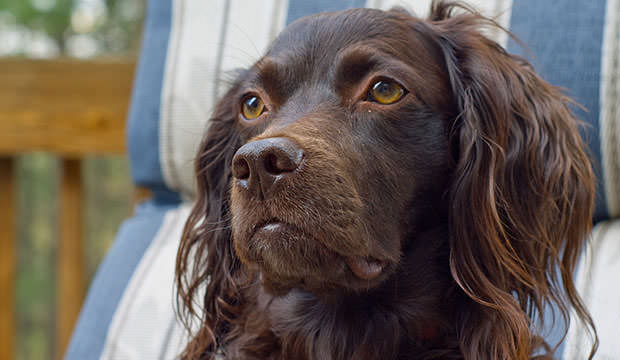
This spaniel was bred to hunt wild turkey around the area of Wateree River Swamp.
Regarded as a versatile hunting dog, the Boykin Spaniel is known for its stamina and endurance even in the hot and humid conditions of South Carolina summers.
Somewhat larger than a Cocker Spaniel, the Boykin Spaniel is favored by hunters who canoe and hunt doves or even pheasants.
Though these dogs have been living and hunting in the region since the early twentieth century, they did not achieve American Kennel Club recognition until 2009. For this reason, they are still little known about.
In spite of their rarity, the Boykin Spaniel is regarded as a great pet. It boasts a friendly demeanor and pleasant appearance with its shades of chocolate brown and intelligent expression. Anyone looking for a southern water spaniel would do well to consider this smart, energetic breed that thrives on pleasing its owner.
Known for its stability with children and other household pets, this breed is an all-around great dog. However, as it’s bred for the mild temperatures of its home state, it may not be content to live up north.
5. Peruvian Hairless Dog
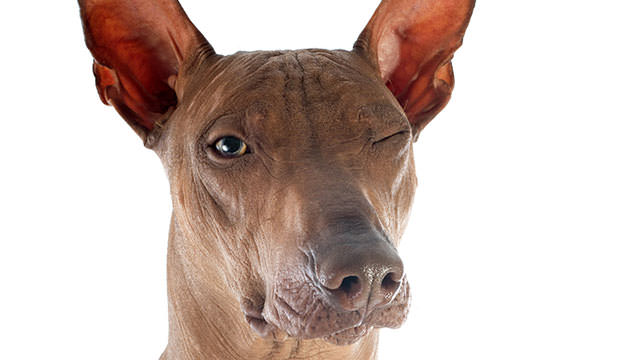
The breed is especially associated with the Inca Empire because it was known to be a favorite breed during this ancient period.
Ceramic artifacts denoting these hairless dogs have been uncovered in Peruvian archaeological excavations.
When the Spanish arrived, the breed was nearly wiped out. However, it still survives today and many people in Peru are quite fond of the breed.
One of the reasons this breed might have avoided extinction is because in outlying areas where examples managed to thrive, the dogs viewed as having mystical qualities. There is something other-worldly about their hairless appearance that makes them quite a sight to behold.
Outside of their hairlessness, this breed is also thought to contain fewer teeth than many other breeds. Also, these dogs vary greatly in size and may be anywhere from 20 – 55 pounds. Hairless dogs like this one require protection from the sun or they will suffer burns.
Though not especially known for their friendly demeanor, the dogs are known to be affectionate with their own families. They also boast a lively nature and are very fast runners.
6. Kishu
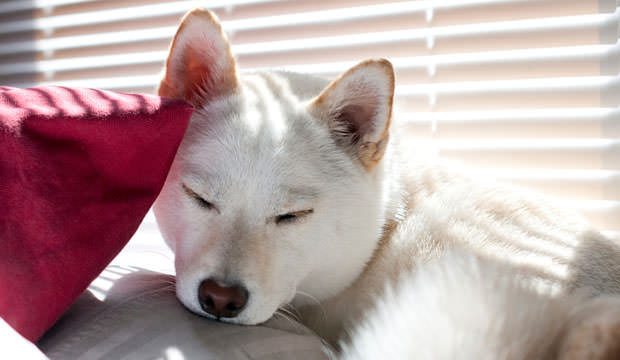
On the other hand, readers of Manga (Japanese-style comics) may spot one in print as these dogs are well-liked by Manga artists.
The Kishu is a medium-sized dog with a white coat. Other color Kishu dogs may be seen on occasion, but a white coat is most common for this breed.
Throughout its history, the Kishu was used to hunt animals like deer and even boar. Interestingly, this breed is a great hunter because it’s known for its ability to quietly stalk its prey. It knows not to bark and is well known for its quiet manner.
While the breed is known for its tough demeanor, it is also regarded as an immensely friendly one which makes it a great pet. This dog is also regarded as highly loyal—especially to its family.
The dog is especially associated with its homeland and its export is restricted. There are breeders outside of Japan, but the breed is quite rare around the world.
Intelligent yet strong-willed, this breed can become somewhat aggressive around other dogs if not socialized as a puppy. It enjoys its dominance!
7. Pharaoh Hound
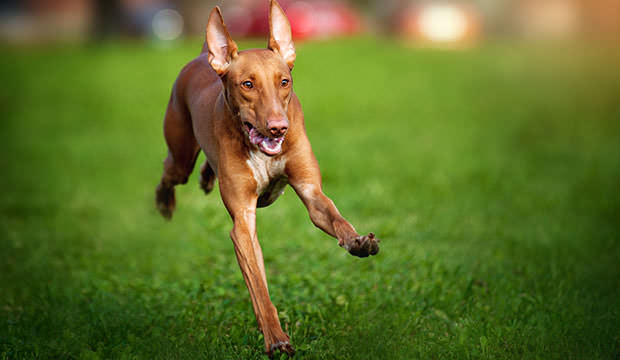
Though the breed’s DNA has not been linked to breeds of Egypt, it is popularly believed to be derived from an ancient Egyptian hunting dog.
In fact, the dog does share similarities to dogs inscribed on ancient Egyptian tombs. The Maltese believe that the Phoenicians brought the dogs from Egypt to Malta.
The Pharaoh Hound is highly regarded for its innate athleticism and sleek build. Lean and muscular, the dog makes an excellent hunting companion.
Interestingly, these dogs blush in their ears and nose when they are excited. While extremely intelligent, the breed is also independent and can show a stubborn streak. These dogs were originally bred to think for themselves so it isn’t surprising the trait has survived intact in this breed.
While the Pharaoh Hound is active outdoors, it can be rather subdued inside and is content to relax with its human family. For this reason, many Maltese families find the breed to be an ideal one.
Although the Pharaoh Hound appears to like to play in the snow, its ears are prone to frostbite which is one reason the dog has remained rare and is only commonly known around the Maltese Islands.
8. Czechoslovakian Vlcak
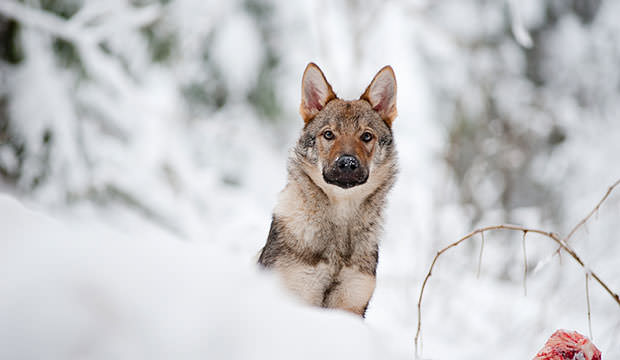
Breeders wanted to incorporate the trainability of the German Shepherd and the strength of the wolf.
Its appearance is quite wolf-like and though it is a rare breed—largely because of its newness—it is one that commands attention wherever it goes.
Interestingly, the breed is quite well-regarded in spite of its wolfish-origins. While it enjoys the endurance, speed, and strength of the wolf, it has many of the desired features that are inherent in German Shepherds.
Though fearless and brave, the Czechoslovakian Vlcak (also known as the Czechoslovakian Wolfdog) is not known to attack without cause. Moreover, these dogs are revered for their loyalty to their owner.
The breed is also known for its playful nature. Yet, strong leadership will foster obedience in these dogs. As they are quite intelligent, they can be temperamental without a strong leader.
While known to do well in family situations, the dog is not entirely trustworthy around other household pets. Though prone to hip dysplasia, the breed is not associated with any other particular health problems.
These dogs enjoy a long life expectancy; however, they do require a lot of exercise and stimulation to keep fit physically and mentally.
9. Pumi
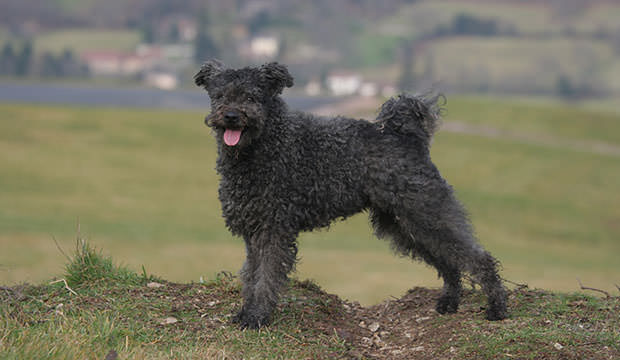
It is also a versatile herding dog and will happily herd cattle or pigs too. In fact, around many farms, these dogs are even used to hunt rodents.
While most Pumis are gray in color, they can also be seen in shades like white, black, and brown. With their thick and curly coats, these dogs are well-liked for their handsome appearance.
For this reason as well as their lively intelligence, they are popular among families. Pumis are quite easy to train.
Though they can be playful amidst their human family members, they can be quite weary of strangers. Experts suggest socializing their dogs as puppies to tamp down their weariness. These dogs tend to weigh about thirty pounds and grow to about nineteen inches in height.
Because they love to run and prefer to remain active, they do best in households that have large backyards. This type of dog is not content with apartment living.
To enhance their need for fitness, owners should provide them with at least one long walk or a jogging session each day. When its fitness needs are met, this dog can make a fine family pet.
10. Catahoula Leopard Dog
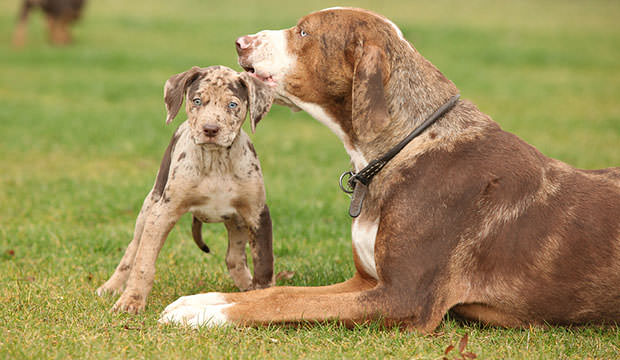
Many believe that this breed was the first to be bred in North America.
Some scholars have suggested that the breed stems from Native American dogs crossed with Greyhounds brought by Hernando DeSoto during the sixteenth century.
Many examples of this breed look quite different from one another. This is because breeders were more concerned with ability rather than appearance.
The Catahoula Leopard Dog was bred to hunt and traits associated with prowess, intelligence, and endurance were strongly promoted.
While active, these dogs are not known to be overly aggressive. For this reason, many families in the Louisiana region have desired to own this breed. The dog happily appears to look after children which it views as one of its jobs.
While originally used to hunt feral pigs, these dogs are adept at hunting other animals, too, like deer, black bear, and even mountain lion. The dogs can look quite unique in appearance; many boast the cracked glass or marble eyes that are associated with this unusual breed.
While the Catahoula Leopard Dog is not well-known, it has been named as Louisiana’s state dog breed due to its historical significance.
11. Kuvasz
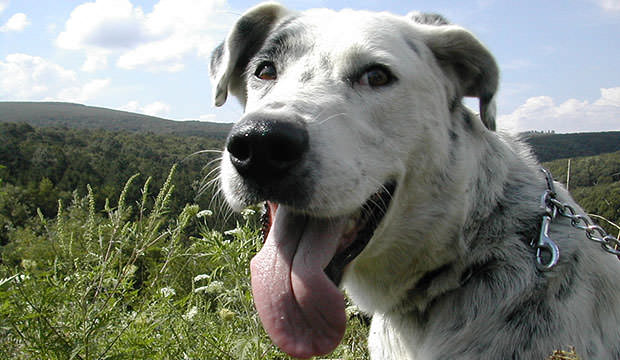
In spite of its abilities as a working dog, many families in Hungary find the dog to be an ideal pet. Playful and intelligent, this breed enjoys lively interaction.
Intensely loyal and protective, the breed enjoys considerable esteem in its homeland even though it is not well-known elsewhere. Archaeologists have traced this breed to migrating Magyar tribes.
Once the Magyar settled in the Carpathian Basin, the breed as it is known today began to more fully evolve into the herding dog that Hungarians are familiar with. During the Medieval period, the dog was a favorite at court—particularly the court of King Matthias Corvinus.
In fact, the king was known to give puppies to important foreign dignitaries. During WWII, these dogs were actually sought out and killed by German soldiers due to their reputation as loyal family dogs. This has only, today, reinforced their identity as a dog of Hungary.
So many Kuvasz dogs were killed, however, that the breed faced near extinction by the end of the war. While the dog is still bred in Hungary, breeders do not have a large gene pool for breeding causing some concern.
12. Griffon Nivernais
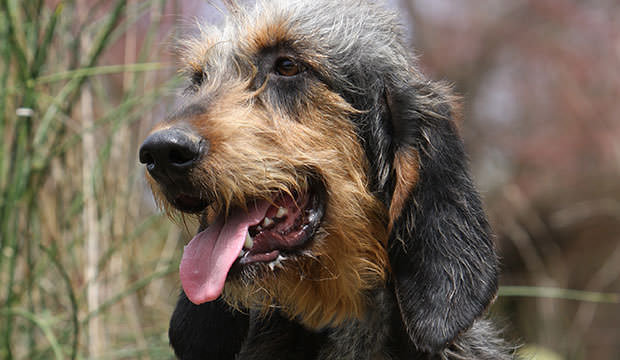
An adept hunter of large or small game, the Griffon Nivernais is comfortable hunting on its own or as a member of a hunting pack.
Its shaggy coat and long drop ears give the breed its distinctive appearance. It is somewhat longer than many French hunting breeds too.
The Griffon Nivernais sports a grizzled-color coat that typically ranges from light gray to dark gray. With its wiry appearance, the breed is not especially known for its speed, but it is revered for its endurance.
Prior to the French Revolution, the dog was commonly bred by French noblemen. However, it did not enjoy resurgence in breeding popularity until the 1920s. Outside of France, of course, it is quite rare to spot. During the Middle Ages, the progenitors of the breed were used for hunting wolf and boar.
Not surprisingly, the ancestors of the Griffon Nivernais were much larger than their modern cousins. Modern examples tend to weigh about fifty pounds. People outside of France who are interested in unique breeds have found the Griffon Nivernais to be an extraordinary pet and capable hunter.
13. Estrela Mountain Dog
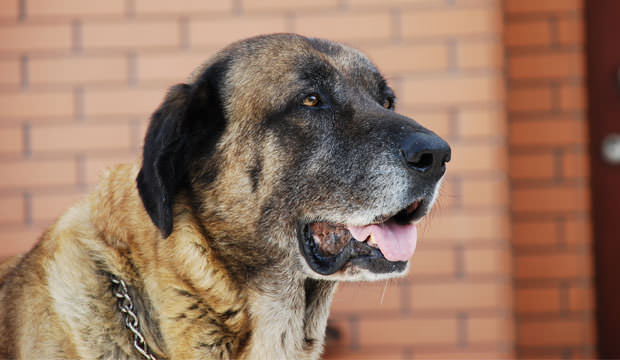
Estrela Mountain Dogs may have entered the region via ancient Romans or Visigoths; there is some dispute as to which group may have introduced them to the Sierra da Estrela region.
Over centuries, the present-day breed took shape to result in a breed that is well known for its easy-going gait, watchful temperament, and reliable loyalty.
Because the Sierra da Estrela region is very isolated, few people outside of Portugal are familiar with this breed.
Today this breed still works herding in and guarding in its homeland. Many Portuguese Marines have also favored the breed for use as patrol dogs. However, its intelligence and loyalty have made it a popular family dog in Portugal. In fact, because the dog has natural nurturing tendencies, it is noted for its adaptability to children.
The breed can be found with two hair types–short and long. Coat color can vary; these dogs are found with yellow hair, gray, and even brindle. Large and athletic, the Estrela Mountain Dog can have an independent streak, but owners that insist upon obedience should be able control their dogs.
14. Russkiy Toy
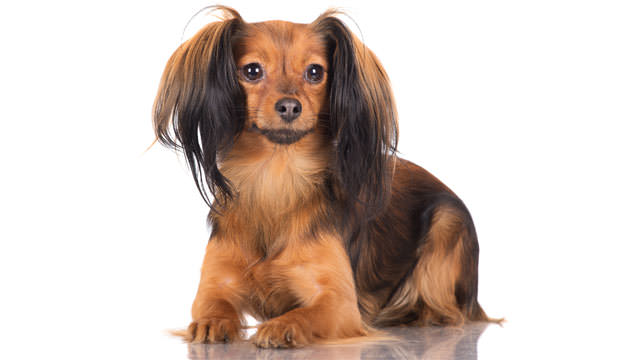
Bred in Moscow, the toy breed suffered considerable unpopularity during the early twentieth century among Communists for its association with aristocrats.
Though the breed survived, it again faced challenges by the end of the century due to the introduction of other breeds after the fall of Communism.
While still quite unknown outside of western Russia, the Russkiy Toy is an amicable dog that many families enjoy. Both long- and short-haired Russkiy Toys resemble Chihuahuas in many respects. Like Chihuahuas, Russkiy Toys are among the smallest dogs in the world. Because of their size, these dogs are prone to bone breaks and fractures.
Russkiy Toys are again popular among families because of their playful natures. They are also known for their cheerful dispositions. In fact, owners of all ages find these dogs to make charming companions. The breed is loyal and even in temperament. In this way, they differ from Chihuahuas, a breed not regarded as particularly friendly.
Luckily, this breed is enjoying some resurgence in popularity thanks to various dog breeders in its homeland. While still relatively unknown outside of Russia, the breed is becoming increasingly well known.
15. Beauceron
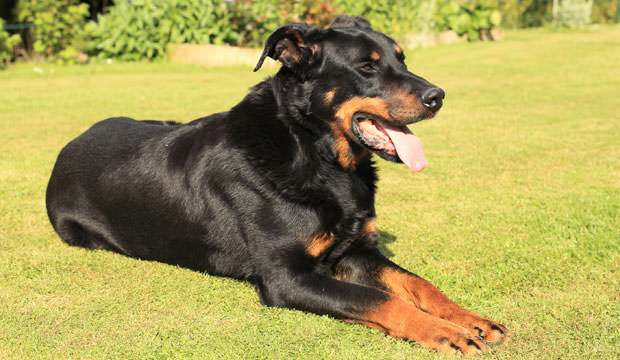
An excellent guard dog, the Beauceron intelligence and calm nature. Though gentle, it is also highly regarded for its fearlessness. Though a great family dog, the breed is mainly concentrated in northern France.
During its history, the dog was known as a great protector of cattle and sheep from predators like wolves. As there is no longer a wolf problem in France, the dog has continued as a herding dog as well as a family dog.
The breed is on the large side and can weight in the region of one hundred pounds. Merle colored or gray, the breed’s coat tends to grow thick especially if it spends most of its time outdoors.
On the other hand, experts suggest that the dog exhibits best traits when allowed to remain indoors. During both World Wars, the Beauceron served as a messenger dog. It was also used to detect mines.
Today it is even employed as a search and rescue dog. Because these dogs make excellent family pets and are also hard-working, it is a shame that they are so little known outside of their homeland.
16. Eurasier
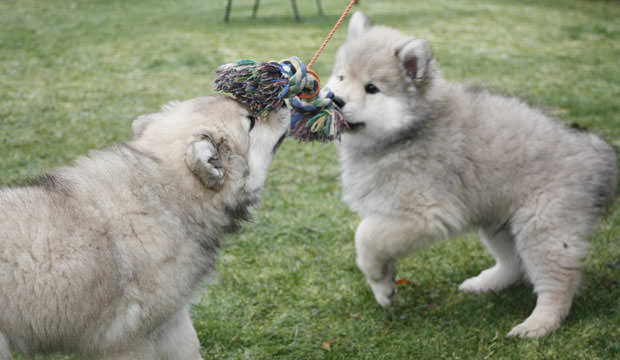
An easy breed to train, the Eurasier is a medium-size Spitz type of dog that is revered for its even temperament. In fact, the dog was bred for companionship.
Families find these dogs make great pets as they form strong familial bonds but are also alert and watchful of strangers.
A relatively new breed, Eurasiers have only been in existence since 1960, which is why they are still unknown. Breeders bred these dogs from Samoyeds, Chow Chows, and Wolfspitz and worked to breed for the most companionable qualities.
The Eurasier can appear in various colors such as fawn, black, wolf-gray, and tan. Males tend to weigh around the seventy-pound mark. The dogs sport a thick coat; the hair around the neck tends to be longer than elsewhere on the dogs. Eurasiers do best as family dogs or companion dogs. They are apt to become depressed if caged or chained up.
With proper training, they are not a mischievous breed and behave well in households with or without children. Even though this is a young breed, its excellent qualities suggest that it is likely to grow in popularity as it becomes better known.
17. Aidi
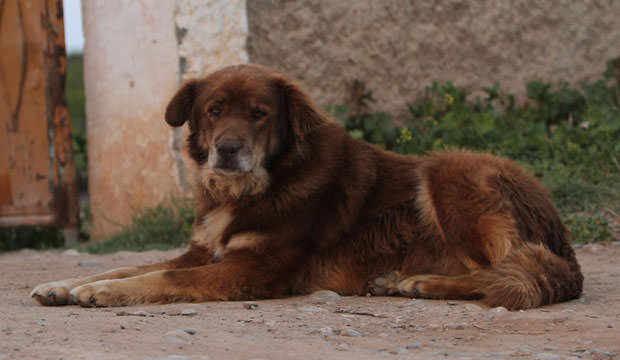
The Aidi is highly regarded for its scenting abilities. When working in tandem with other hunting dogs, this scenting ability often leads the way to prey.
The Aidi is an energetic breed that thrives on activity. Since it is naturally protective, many people employ it as a watchdog.
In fact, in Morocco and nearby countries, the most energetic and watchful Aidi dogs are stationed around the herd to help protect it. Even so, these dogs aren’t herders. Tribes employ other breeds for that function.
The Aidi weighs up to fifty-five pounds. Their coats can be black, brown, white, tan, or even a mix of shades. People that want to keep the Aidi as a family pet find that it helps tremendously to socialize this dog at a very young age for best results. It can make a great family pet.
Of course, it does require plenty of exercise as it has been bred for hunting. In fact, these dogs thrive on tasks, so it’s important that they have something to do to avoid boredom.
18. Lowchen
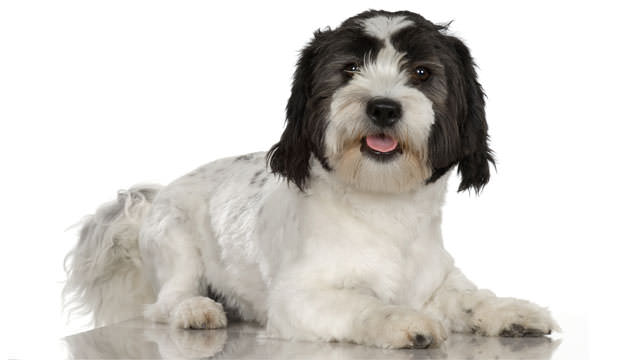
A toy dog, the Lowchen can be traced back to the fifteenth century.
As an old breed popular with the wealthier classes, the dog can be found in numerous Renaissance paintings and has been described or named in works of literature.
The breed was established in the areas of Belgium, Germany, and Holland where it was kept as a pet by aristocrats.
While the dog may be related to the Bichon Frise, historians think that its ancestors were dogs brought to the area from the Orient that happened to mix with regional Spitz-type dogs.
Many people enjoy this breed for its charming appearance and quiet temperament. The dog is not regarded as a barker as other toy breeds tend to be. Known for its happy disposition, it’s rather strange that this breed is so rare given its propensity for health and companionship.
The Lowchen’s coat is fashioned like a lion’s mane and is long and flowing. Colors vary; some dogs boast a gray coat while others may be golden-hued. While these dogs make superior pets, they do not care to be left alone for long intervals and may suffer from separation anxiety.
19. Berger Picard
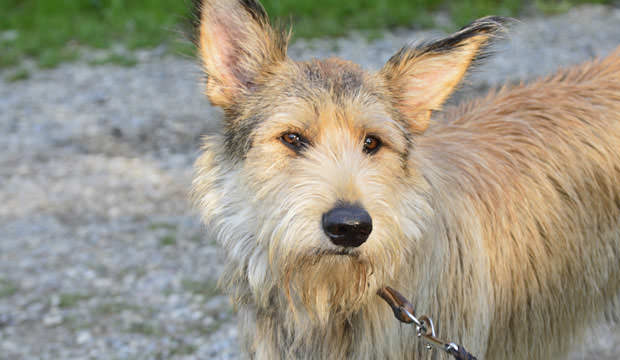
Weighing in at about twenty-three pounds, this breed is rare and nearly became extinct as a result of both World Wars.
Though beloved for its scruffy, mutt-like appearance, this pure bred is increasing in popularity somewhat because it was featured in the film Because of Winn Dixie.
Even so, it is still rare and, because of its care requirements, is not likely to become the next Labrador. Puppies require intense socialization to induce obedience and companionship.
Many Berger Picard owners assert that good early training leads to enthusiastic pets that make excellent family pets. While assertive, the breed can also exhibit a playful streak. Intelligent and lively, these dogs simply like to be kept busy. They tend to excel at tasks and appear to find joy in work.
Although this breed is best-suited to the country life, many city dwellers find that they adapt well, especially when they are provided with adequate exercise and attention. In fact, they can get rather attached to their owners and may suffer separation anxiety when left alone too long.
20. Skye Terrier
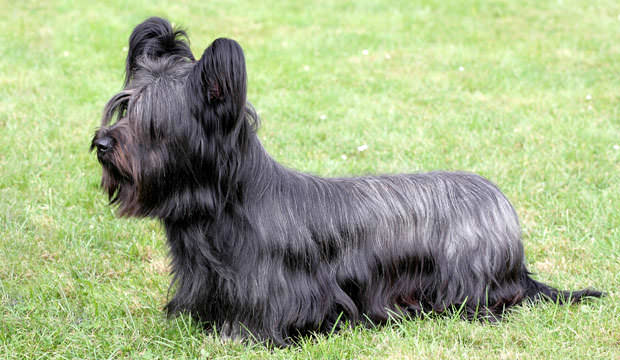
In fact, it is one of the most endangered breeds in the United Kingdom. In spite of its rarity, though, this dog is a charming companion and regarded as very companionable.
Loving, affectionate, and endearing to many, the Skye Terrier is one of the oldest terrier breeds and enjoys a life expectancy up to fifteen years.
Utterly playful, this breed loves to chase, which means it may not be companionable to other small animal pets in the home. It can be found in various colors from blonde to black.
Many people who do own this breed find that it only requires a moderate degree of exercise and is quite happy living life in an apartment. A medium-sized dog that needs quite a bit of brushing, the Skye Terrier was one of the breeds favored by Queen Victoria.
Originally bred for catching rats like many terriers, this dog has evolved into a delightful pet. It’s uncertain why the breed diminished in popularity, but there are serious fears that it may go extinct as so few have been born in the last decade in the UK.

No Shiba Inu on the list?
Shiba Inu aren’t that rare, my sister in law had one, and I’ve seen some out and about. They aren’t as popular as some other breeds but they have a good genetic pool for breeding,
Catahoula’s are rare??? Wierd. They are such a popular dog down here in central TX…. We have one – they are awesome dogs, incredibly smart. They are called ‘redneck dogs’ a lot – because they are popular with rednecks down here. lol
I hadn’t heard of the catahoula until I moved to Florida. They’re popular in this part of the country (Florida, Georgia, Alabama, Texas, Louisiana) but not in other places.
My local animal control is constantly filled with catahoula’s! Rescues in GA are full of them if people are looking for them.
Many of those rescue Catahoulas [no apostrophe for plurals, please] are not really Catahoulas but rather attempts to pass pitbull mixes off as something more acceptable.
If you say so QM, Here in Central Louisiana just about every one knows the difference. I’ve had 2 stocky “cur dogs”. They were very good with the kids and VERY protective of my wife and kids. They loved riding the truck and a romp in the woods. Both preferred the outside to being inside all day. They did enjoy the floor by the backdoor if they were inside.
They have missed the Armenian Sheep dog ” GHAMPAR”. It is a large breed . They are very attached to their masters and have a canning ability to feel a danger before it happens. They are also “independent” thinkers.
The Finnish Spitz can be used to hunt grouse or moose which only becomes a problem if it’s also a retriever.
No Australian koolies?